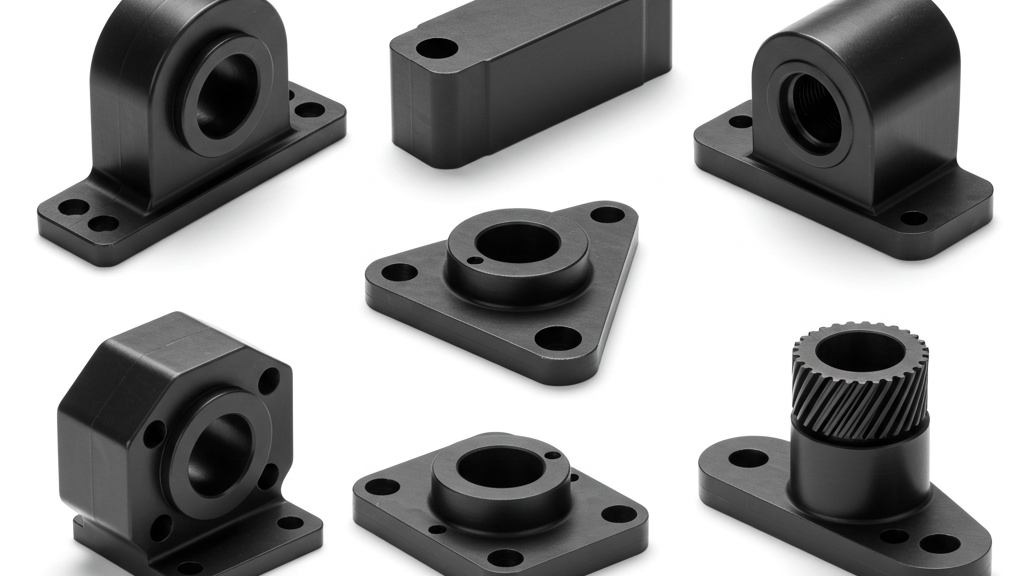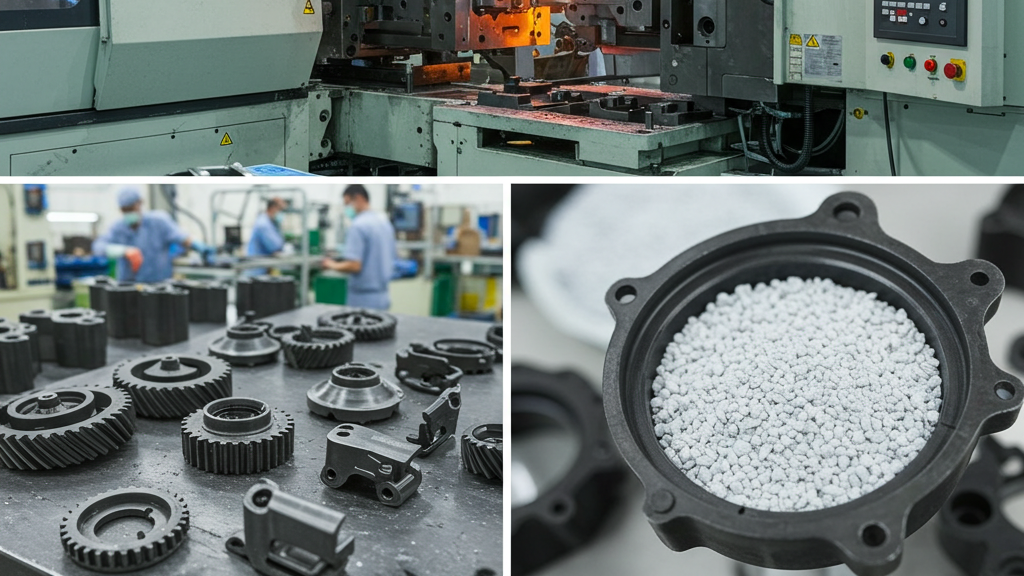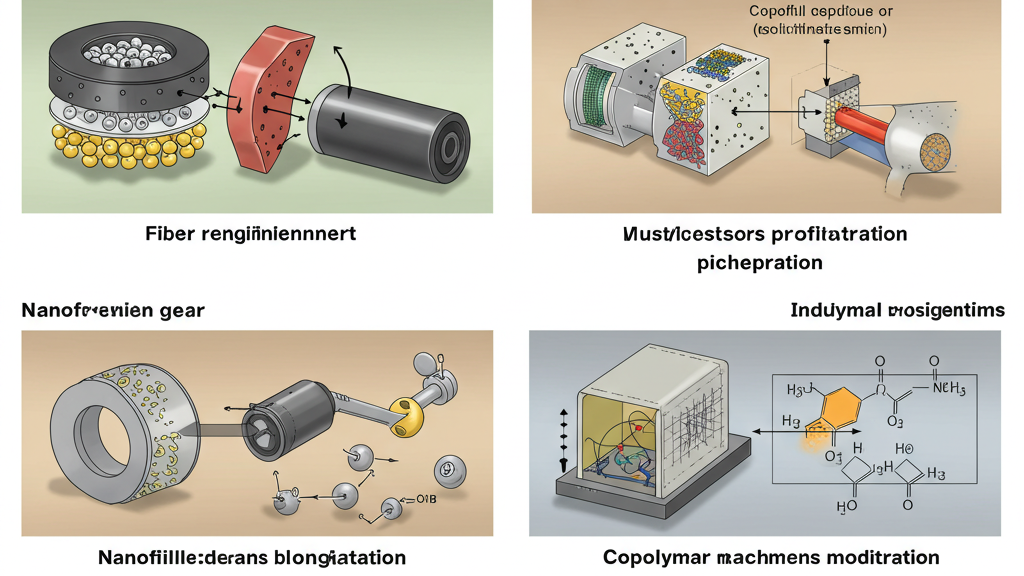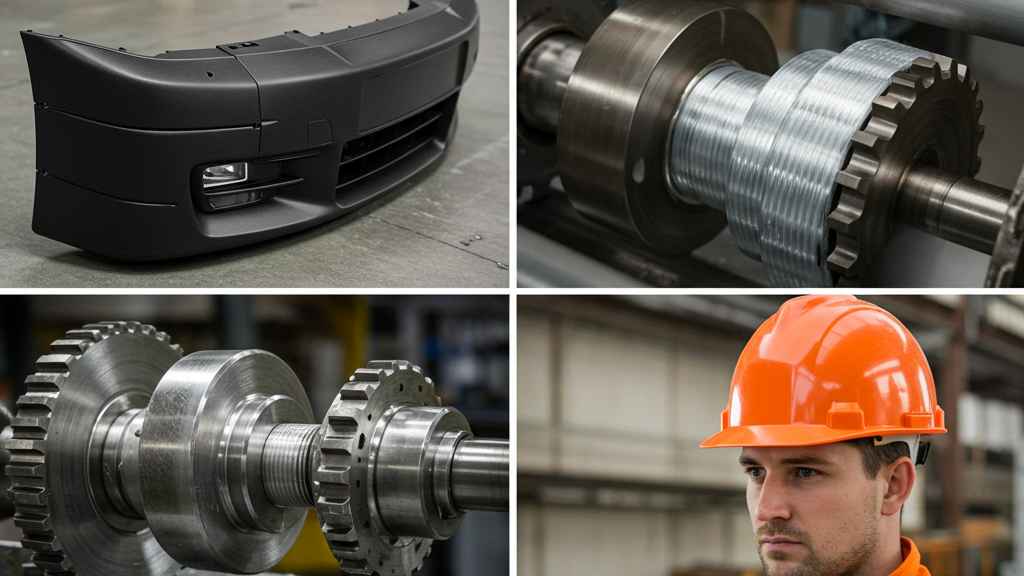
Nylon, as an important synthetic polyamide, has garnered significant attention in the field of engineering materials. Particularly in applications requiring impact resistance, nylon exhibits unique advantages. From a professional perspective, this will explore the outstanding impact resistance of nylon and analyze the reasons behind it, providing a reference for related applications.
Nylon has great potential in impact resistance applications. So, what intrinsic properties give nylon such excellent impact resistance? How is it reflected in practical applications? Next, we will deeply analyze the structure and mechanical behavior of nylon to better understand its unique value in impact resistance.
What properties of nylon contribute to its impact resistance?

Nylon excels in impact resistance applications due to its unique molecular structure and resulting material properties, which are key to its exceptional impact resistance. A deep dive into the microscopic world of nylon reveals the flexibility of its polymer chains:
- Flexible Molecular Chains: The long-chain structure gives nylon deformation capability, absorbing impact energy.
- Excellent Toughness: High elongation at break and impact strength make it resistant to brittle fracture.
- Balanced Crystallinity and Intermolecular Forces: Crystalline regions provide strength, amorphous regions contribute to toughness, and intermolecular forces transfer energy.
- Strong Modification Potential: Impact resistance can be significantly improved through modification to suit different needs.
How is nylon’s impact resistance superior to other materials?

In application areas requiring excellent impact resistance, nylon often stands out. This is not only due to its inherent material properties but also to its unique advantages in specific impact scenarios. For example, its energy absorption efficiency and resistance to destruction often surpass those of traditional metals or general-purpose plastics.
- Efficient Energy Absorption: Nylon’s flexibility allows it to effectively absorb and dissipate impact energy.
- Excellent Fracture Toughness: Nylon is more resistant to crack initiation and propagation, and less prone to brittle fracture.
- Significant Weight Reduction: Compared to metals, nylon is lighter, reducing inertial impact forces.
- Flexible Modification Potential: Through modification, nylon can further enhance its impact resistance to meet diverse needs.
What are the practical applications of nylon’s impact resistance?

Thanks to its excellent impact resistance, nylon has demonstrated irreplaceable application value in many fields. From the automotive industry to sports equipment and protective gear, nylon is ubiquitous, effectively improving product safety and durability, and becoming a key material for resisting accidental impacts.
- Critical Automotive Components: Nylon is used in automotive bumper brackets, etc., to absorb collision energy and ensure safety.
- Sports Protective Equipment: Ski binding components and helmets, etc., use nylon to provide sports protection.
- Industrial Equipment Components: Nylon is made into gears and tool housings, impact resistance extends service life.
- Personal Protective Equipment: Safety helmets and bulletproof vests, etc., use nylon to provide safety protection.
The impact resistance of nylon surpasses that of other materials.
|
Property |
Nylon (PA6/PA66) |
Polycarbonate (PC) |
Acrylonitrile Butadiene Styrene (ABS) |
Polypropylene (PP) |
| Energy Absorption | Good toughness, strong plastic deformation ability, effectively absorbs medium to low-speed impact energy. | High impact strength, especially at low temperatures, but may experience brittle fracture. | Medium impact strength, high notch sensitivity, significant drop in low-temperature impact performance. | Low impact strength, prone to brittle fracture, especially at low temperatures. |
| Fracture Toughness | Excellent, strong resistance to crack propagation, less prone to brittle fracture. | Good, but may crack at stress concentration points. | Medium, crack propagation resistance not as good as Nylon and PC. | Poor, prone to brittle fracture. |
| Lightweighting | Moderate density (1.13-1.15 g/cm³), lighter than metal. | Higher density (1.20-1.22 g/cm³), but still lighter than metal. | Moderate density (1.04-1.07 g/cm³), significant lightweighting advantage. | Lowest density (0.90-0.91 g/cm³), significant lightweighting advantage, but lower strength. |
| Modification Potential | Significant potential for improvement in impact strength and stiffness (e.g., glass fiber reinforcement, toughening), wear resistance can also be enhanced. | Potential for improving scratch resistance and UV resistance, but toughening effect is relatively limited. | Potential for improving gloss and heat resistance, but limited scope for improving impact resistance. | Potential for improving impact strength through filling or copolymerization, but effects may not be as good as Nylon. |
| Typical Impact Applications | Automotive bumper brackets, gears, bearing cages, protective parts for sports equipment, power tool housings. | Automotive light covers, safety glasses, sports helmets, electronic device housings. | Automotive interior parts, appliance housings, toys, luggage. | Automotive bumpers (some), chemical containers, household appliance parts. |
Enhancing Impact Resistance of Nylon
While nylon already possesses a certain degree of impact resistance, continuously improving its impact performance is crucial in the face of increasingly demanding application requirements. Continuously exploring nylon’s potential through material modification, structural optimization, and other means, so that it can play a key role in a wider range of fields, is one of the important directions of current materials science research.
1.Elastomer Toughening: Flexible particles absorb energy, improving impact toughness.
2.Fiber Reinforcement: High-strength fibers bear the load, enhancing impact strength and stiffness.
3.Nanofiller Modification: Tiny particles enhance interfacial interaction, improving overall impact resistance.
4.Copolymer Modification: Changing the molecular structure, optimizing flexibility and crystallinity to improve impact resistance.
Conclusion
Nylon excels in impact resistance applications due to the flexibility and high toughness of its molecular structure. Compared to other materials, nylon is more advantageous in terms of energy absorption and fracture resistance, and is widely used in automotive and protective fields. Through modification techniques such as toughening and reinforcement, nylon’s impact resistance can be further enhanced.
For expert assistance in implementing for your production needs, visit our resource center or contact us. Let’s help you scale up your manufacturing with precision and efficiency!
Post time: Apr-14-2025
